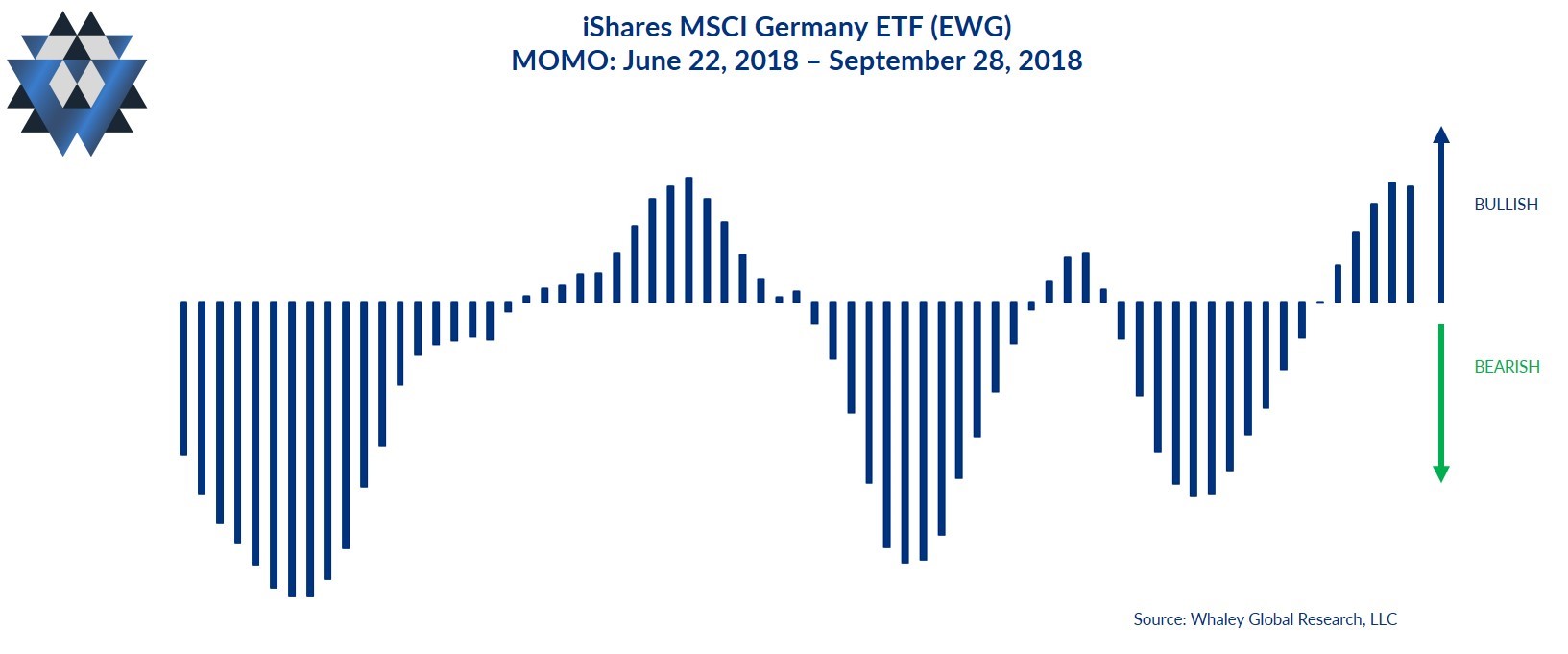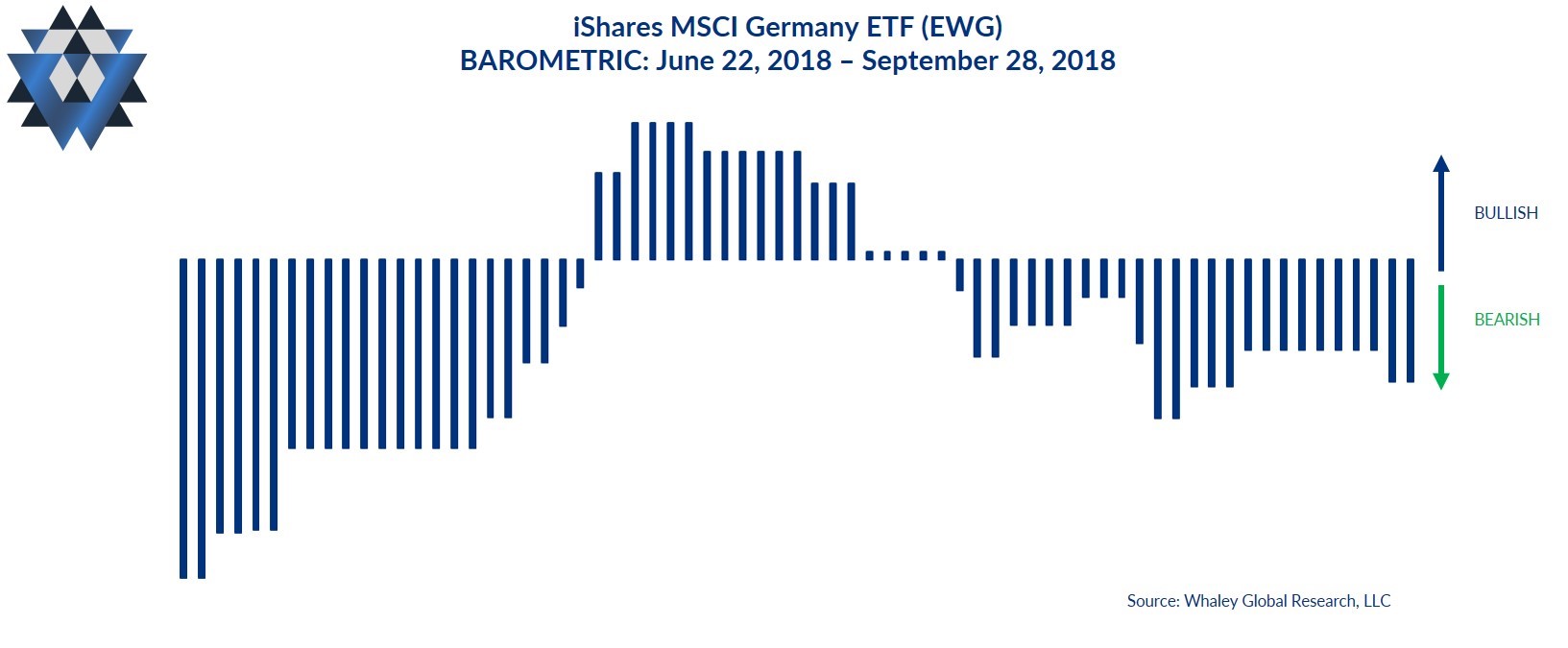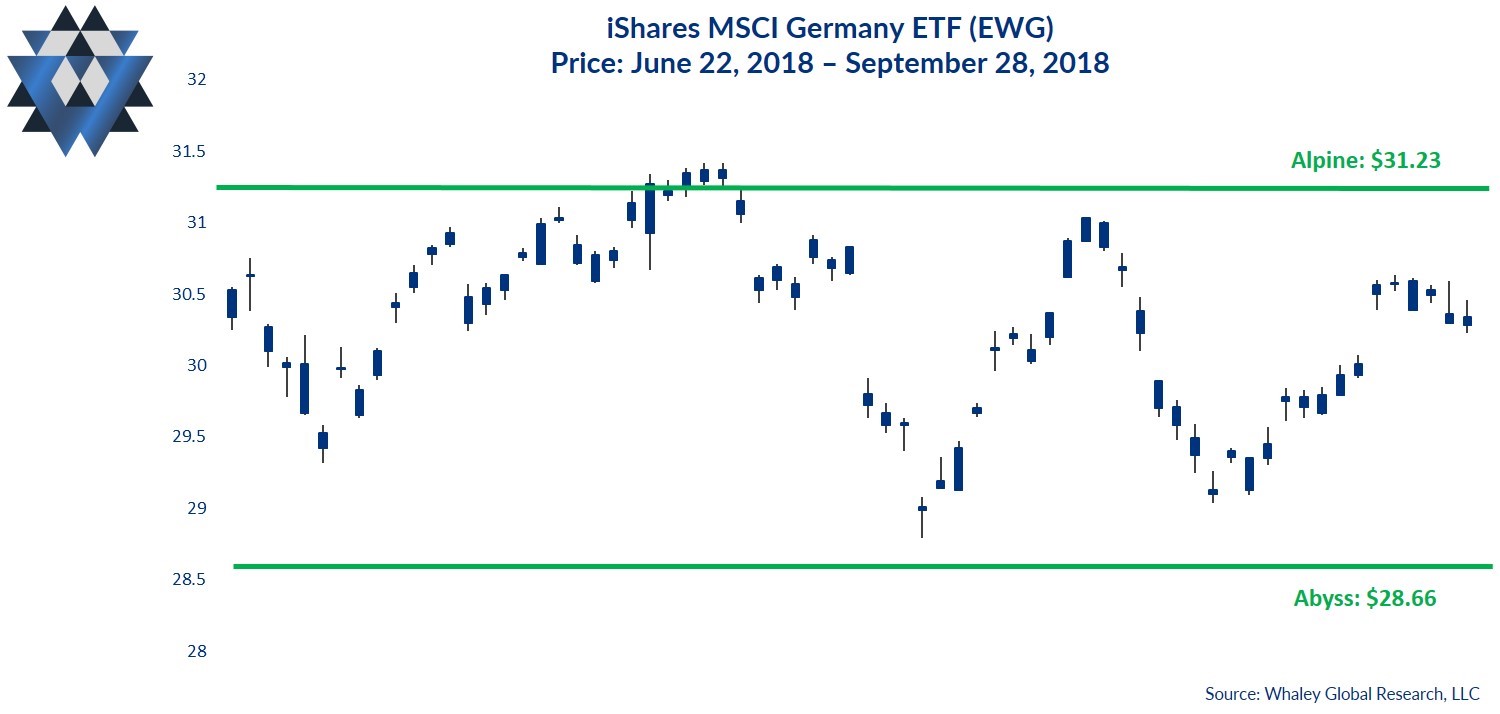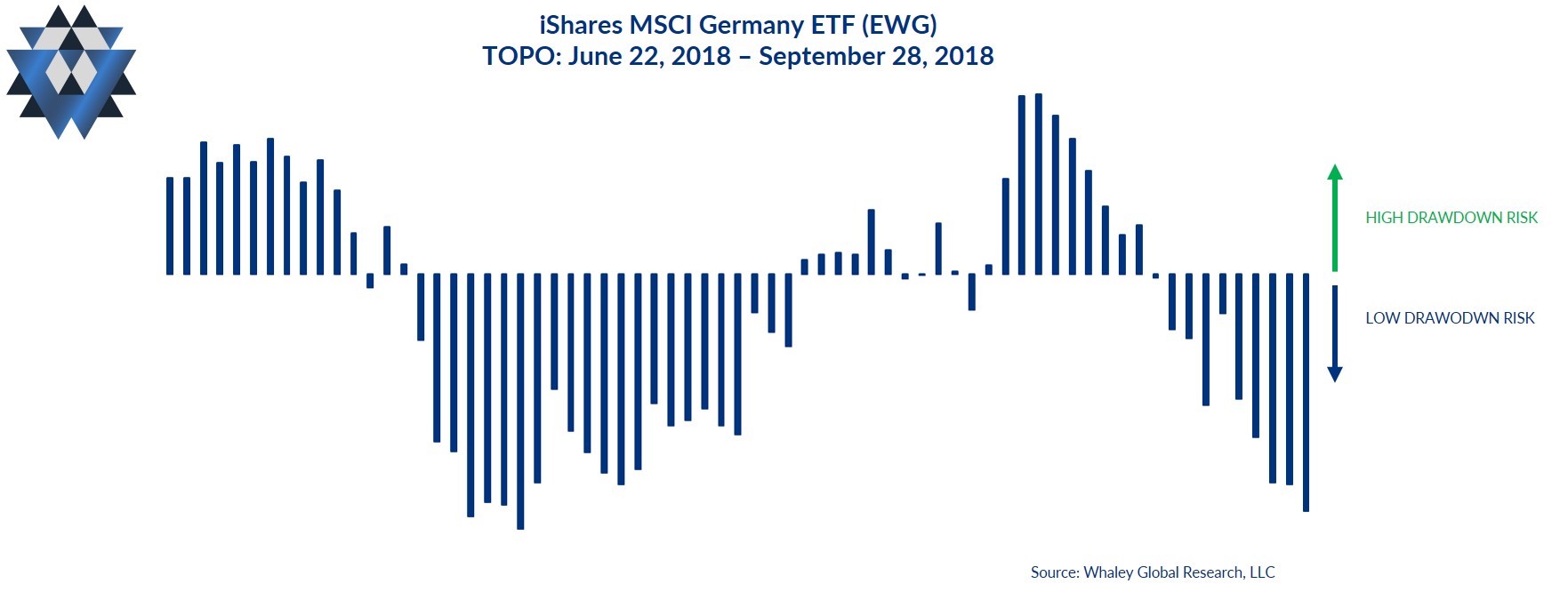In part 1 of our commentary, we discussed the current Fundamental Gravity of our “Draghi’s Dilemma” macro theme. If you missed Part 1, I would encourage you to read through that first, before jumping into part 2 here, writes Landon Whaley Friday.
We covered a great deal of critical fundamental developments, which are bearishly impacting German equities and the US-listed ETF, iShares MSCI Germany ETF (EWG).
Quantitative Gravity says what?
As a quick reminder, the Quantitative Gravity component of our Gravitational Framework is not technical analysis, which is ineffective and misleading. Rather, we use quantitative measures based on the reality that financial markets are a nonlinear, chaotic system.
We’ve identified four primary quantitative dimensions of financial markets that affect price movement: energy (trend), force (momentum), rate of force (buying pressure), and a market’s irregularity (level of imminent drawdown risk).

Social is our measure of a market’s current energy (or trend). EWG’s Social reading indicates it is asleep despite its most recent three-week, +5.1% bounce. Given the Fundamental Gravity, the most likely trend for EWG when it awakes is a bearish hangover.
Momo is our measure of the amount of force behind the market’s current state. EWG’s Momo is currently giving us a neutral reading but has been predominantly bearish since February 7. Yet another bearish factor is that a 5% rally in price hasn’t bullishly impacted Momo.

Barometric is our measure of buying and selling pressure or the rate of force behind the current Momo. EWG’s Barometric indicates that sellers continue to be in control of this market. What’s more, the bearish selling pressure is building, again despite a 5% move in just three weeks.

Topo, which measures the probability of a drawdown, is indicating a low level of drawdown risk for EWG over the next 10 trading days. Topo is the single dissenter in the bearish case for EWG, but this isn’t surprising given that markets (even entrenched bear markets) cycle between periods of high and low drawdown risk. EWG’s Topo was screaming for a drawdown in the days leading up to the -6.4% decline between August 28 and September 7.

Alpine and Abyss Lines
Our proprietary Alpine and Abyss lines are not “support” and “resistance.” Rather, they are the areas above and below the most recent closing price where price is likely to experience an acceleration in its current trajectory, or a possible reversal of its current course. We calculate these critical prices utilizing fractal geometry and Chaos Theory as the foundation to analyze the underlying market structure, which is not visible on a price chart.
When a particular market’s price interacts with the Alpine or Abyss areas, regardless of whether the price is rejected by the Alpine or Abyss area or is able to breakout above (or breakdown The most critical Alpine area for EWG above Friday’s closing price is between $30.49 and $31.23. This means that it’s highly likely that any upside price momentum will stall at this area. However, if EWG closes decisively above that area, price is likely to accelerate higher from there.
The most critical Abyss area for EWG below Friday’s closing price is between $29.05 and $28.66. This means that it’s highly likely that any downside price momentum will stall at this area. However, if EWG closes decisively below that area, price is likely to accelerate lower from there.
The Quantitative Gravity bottom line is that all factors (except Topo) are flashing deeply bearish signals, and EWG has been making a series of lower highs for the last eight months. This is the textbook definition of a bear market.
Behavioral Gravity says what?
Behavioral Gravity allows us to evaluate investors’ perception of this market and how that perception changes and shifts over time.
The Behavioral Gravity Index (BGI) for EWG turned bullish at the beginning of September, which isn’t surprising because nothing is more human than to chase markets. EWG’s +5.1% three-week rally in September has investors forgetting about the prevailing Fundamental Gravity #4 environment.
The Behavioral bottom line is we are glad to see this bullish humanness on display because the best opportunities come when there is a divergence between a market’s Fundamental Gravity (bearish for EWG) and its Behavioral Gravity (bullish).
The Trade Idea
As long as EWG trades below $31.23, new short trade ideas can be initiated opportunistically on rallies. Depending on your entry price and how much room you want to give this trade idea to move, use a risk price between $30.49 and $31.23. That said, your risk price line in the sand is $31.23. If EWG closes above that price, exit any open trades. If the trade moves in your favor and EWG trades down to the $29.09 to $28.66 area, consider closing some, or all, of your position.
We are currently short EWG in our Asset Allocation Model. If there is a change to our bias for this market or we see an opportunity to book gains, we’ll send out a real time email alert.
In addition to providing detailed analysis and trade ideas like this commentary on a weekly basis, we also provide real-time email alerts whenever we add, or close, a position in our Asset Allocation model inside our Gravitational Edge report.
Please click here and sign up if you’d like to receive an email alert when we initiate or close our position in this market and to participate in an eight-week free trial of our research offering, which consists of three weekly reports: Gravitational Edge, The 358, and The Weekender.





















